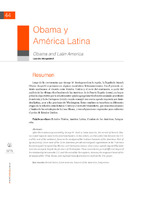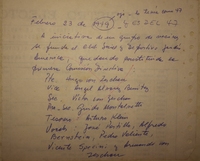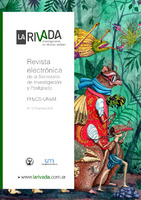Obama y América Latina
Obama and Latin America
| dc.rights.license | Licencia de Creative Commons Reconocimiento-NoComercial-CompartirIgual 4.0 Internacional (CC BY-NC-SA 4.0) | |
| dc.contributor.illustrator | Castiglioni, Guillermo Luis | |
| dc.creator | Morgenfeld, Leandro | |
| dc.date.accessioned | 2016-04-20T18:36:09Z | |
| dc.date.accessioned | 2019-08-21T22:34:35Z | |
| dc.date.available | 2016-04-20T18:36:09Z | |
| dc.date.available | 2019-08-21T22:34:35Z | |
| dc.date.issued | 2014-08-30 | |
| dc.identifier.citation | Morgenfeld, L. (2014). Obama y América Latina. La Rivada, investigaciones en ciencias sociales. Posadas (Misiones): UNaM. FHyCS; 1(2), 44-59. | |
| dc.identifier.issn | 2347-1085 | |
| dc.identifier.other | RLR-021 | |
| dc.identifier.uri | https://hdl.handle.net/20.500.12219/1799 | |
| dc.identifier.uri | http://larivada.com.ar/index.php/ediciones-anteriores/33-numero-2-octubre-2014/dossier-2/70-obama-y-america-latina | |
| dc.description | Fil: Morgenfeld, Leandro. Universidad Nacional de Buenos Aires; Argentina. | es_AR |
| dc.description | Fil: Morgenfeld, Leandro. Consejo Nacional de Investigaciones Científicas y Técnicas; Argentina. | es_AR |
| dc.description.abstract | Luego de las resistencias que George W. Bush generó en la región, la llegada de Barack Obama despertó esperanzas en algunos mandatrios latinoamericanos. En el presente artículo analizamos el vínculo entre Estados Unidos y el resto del continente, a partir del análisis de las últimas dos Cumbres de las Américas: la de Puerto España (2009), en la que primó la expectativa por la relación entre iguales que prometió el recién asumido presidente demócrata; y la de Cartagena (2012), cuando emergió una nueva agenda impuesta por América Latina, pese a las presiones de Washington. Estas cumbres se inscriben en diferentes etapas de la relación entre Estados Unidos y el resto del Hemisferio, que muestran alcances y límites de las estrategias de la Casa Blanca, y reconfiguraciones regionales para enfrentar el poder de Estados Unidos. | es_AR |
| dc.description.abstract | After the resistance generated by George W. Bush in Latin America, the arrival of Barack Obama raised hopes in some Latin American leaders. In this article, we discuss the link between the U.S. and the rest of the continent, focus on the analysis of the last two Summits of the Americas: Port of Spain (2009), when most of the Latin American presidents had good expectations in the “relations between equals” proposed by Obama; and Cartagena (2012), when a new agenda imposed by Latin America emerged, despite the pressure of Washington. These summits are part of different stages of the relationship between the U.S. and the rest of the Hemisphere, showing the scope and limits of the strategies of the White House, and regional reconfigurations to confront the U.S. power. | en |
| dc.format | application/pdf | |
| dc.language.iso | spa | es_AR |
| dc.publisher | Universidad Nacional de Misiones. Facultad de Humanidades y Ciencias Sociales. Secretaría de Investigación y Posgrado | es_AR |
| dc.rights.uri | http://creativecommons.org/licenses/by-nc-sa/4.0/ | |
| dc.source | La Rivada, investigaciones en ciencias sociales (Misiones), 8-2014; 1(2): pp. 44-59 http://www.larivada.com.ar/ | |
| dc.subject | América Latina | es_AR |
| dc.subject | Estados Unidos | es_AR |
| dc.subject | Cumbre de las Américas | es_AR |
| dc.subject | Integración | es_AR |
| dc.subject | United States | en |
| dc.subject | Latin America | en |
| dc.subject | Summit of the Americas | en |
| dc.subject | Integration | en |
| dc.title | Obama y América Latina | es_AR |
| dc.title | Obama and Latin America | en |
| dc.type | info:eu-repo/semantics/article | |
| dc.type | info:ar-repo/semantics/artículo | |
| dc.type | info:eu-repo/semantics/publishedVersion |
Files in this item
This item appears in the following Collection(s)
-
Revista La Rivada [327]
En esta colección se depositan los artículos publicados en la Revista digital La Rivada, una publicación semestral de la SINVyP-FHyCS-UNaM.







